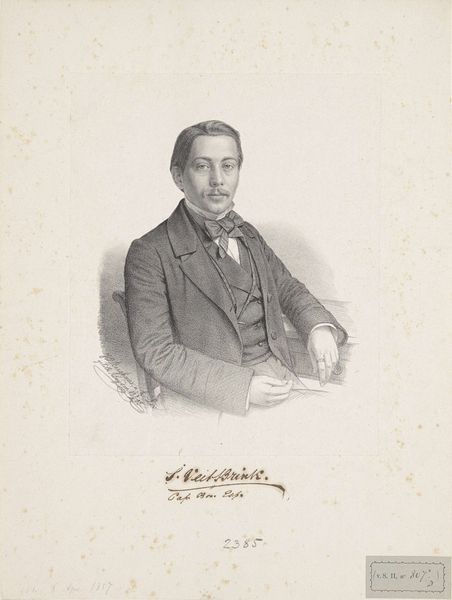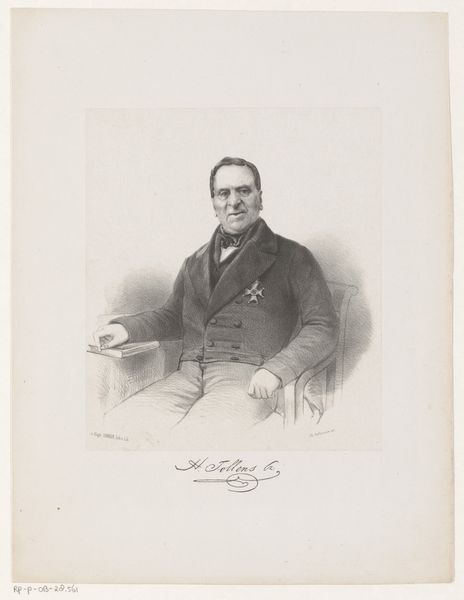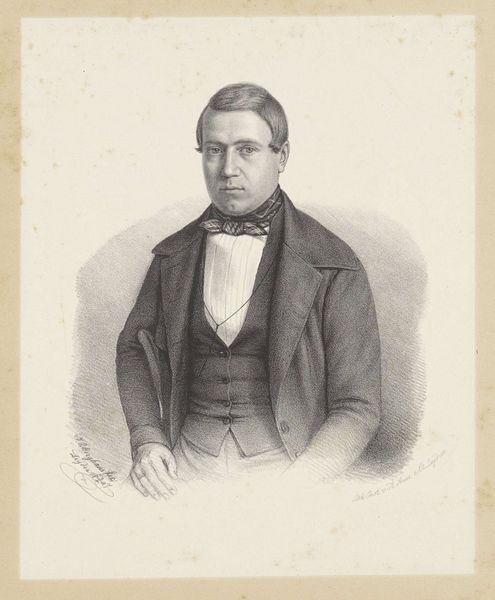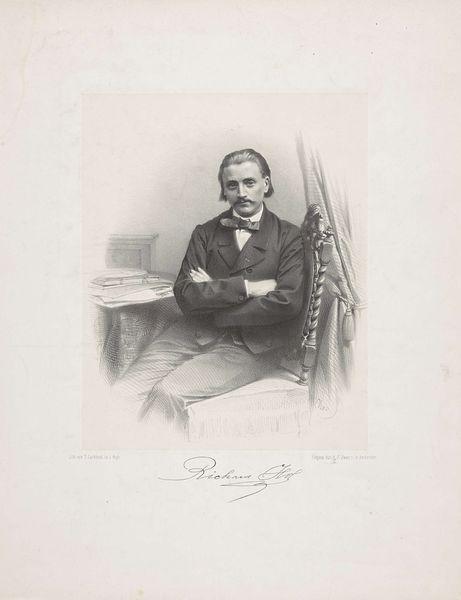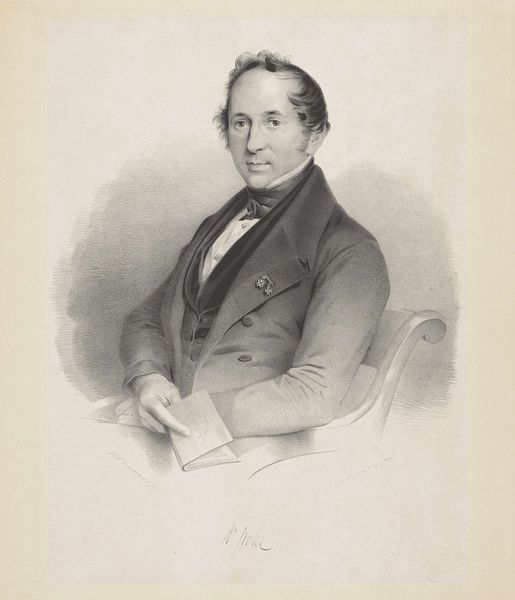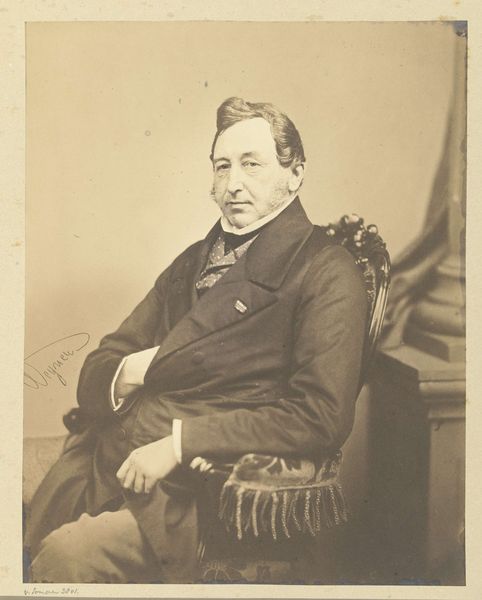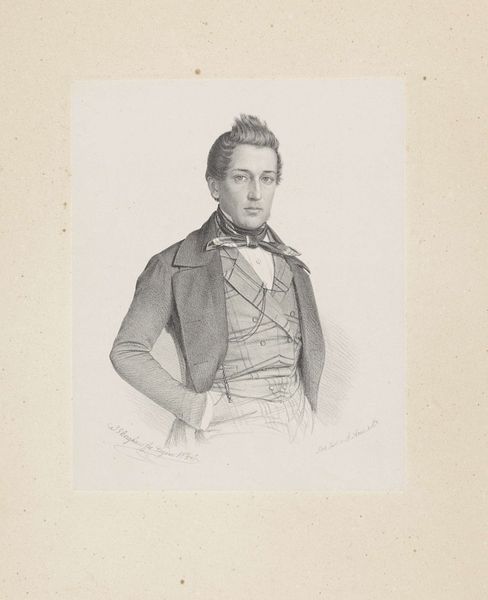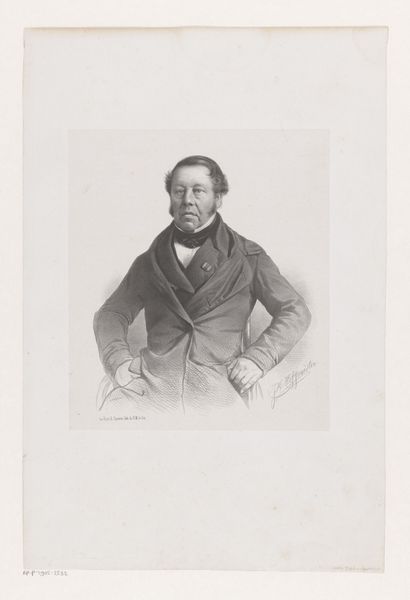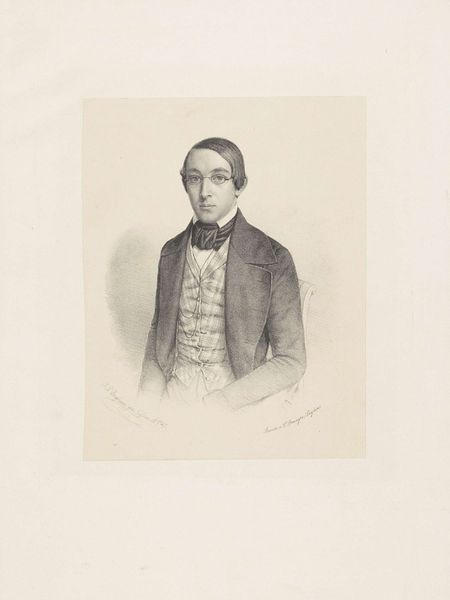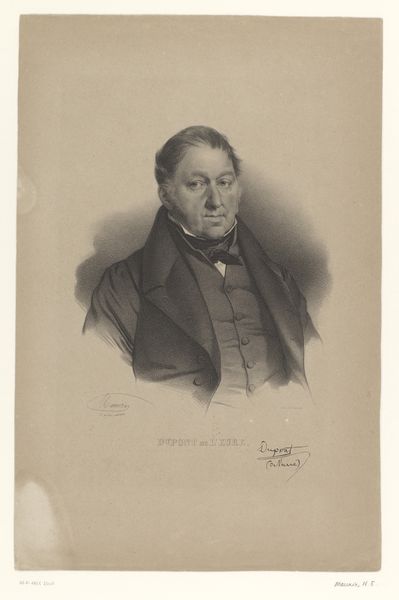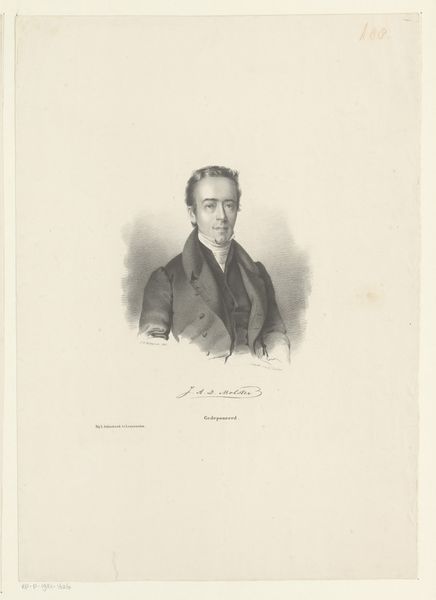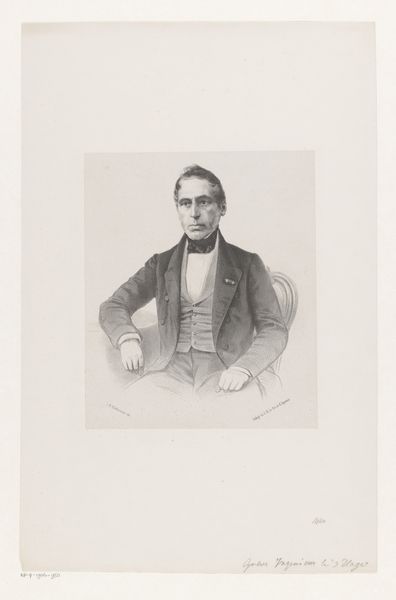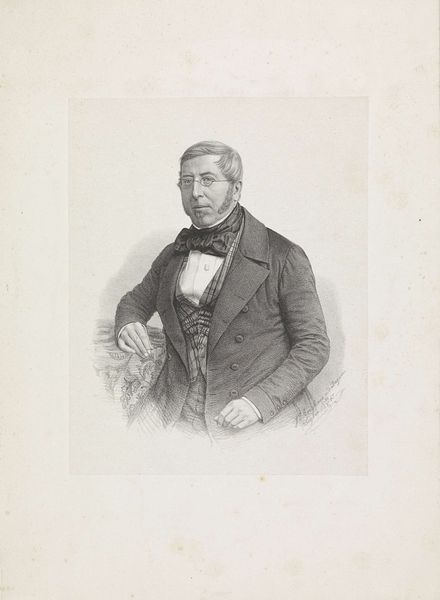
print, engraving
#
portrait
# print
#
old engraving style
#
academic-art
#
engraving
#
realism
Dimensions: height 225 mm, width 141 mm
Copyright: Rijks Museum: Open Domain
Dirk Jurriaan Sluyter made this portrait of Hendrik Tollens using lithography, a printmaking process that democratized image production in the 19th century. Lithography relies on the chemical repulsion between oil and water. The artist draws an image with a greasy crayon on a flat stone, treats the stone with chemicals, and then wets it. When oily ink is applied, it sticks only to the crayon marks. The image can then be printed onto paper. Unlike engraving, which requires laborious cutting, lithography allowed for a more direct, expressive mark. Here, we see that freedom in the delicate rendering of Tollens's features and clothing. The process enabled mass production of images, making portraits like this accessible to a wider audience, and shaping the visual culture of the era. Considering lithography's role in disseminating images, we can appreciate how this portrait contributed to the construction of Tollens's public persona, blurring the lines between art, commerce, and the rise of celebrity culture.
Comments
No comments
Be the first to comment and join the conversation on the ultimate creative platform.
